The text-book definition of a public space requires that three criteria are met. Firstly, a public space is of a physical nature, with a tangible existence. It may not exist in the virtual realm. Secondly, that space must be an accessible space for all urbanites regardless of gender, race, ethnicity, age or socio-economic level with free circulation of persons and goods. It may have been appropriated by a group or several groups of users or the general public, and affects their daily life. And, lastly, a public space is one that forms part of the public realm and it is owned and maintained by the public or the government.
This last criterion is a bit blurry when one looks at public spaces in many cities in Asia. Very often, a space may function as a public space but belongs to private developers who police and maintain it. This widening of the definition suddenly opens up the way to a variety of contenders to the title of ‘public space’; from the classical plazas, squares, parks and sidewalks to redefined shopping malls, and transportation hubs.
For increased business, these commercial developments need to appear more accessible and the strategy is to integrate or recreate the spatial characteristics of public spaces with additional functions. New malls types are re-branding themselves as pedestrian malls and are doing away with the walls and roofs, preferring street typologies, open-air plazas, outdoor amphitheaters, public roof gardens and even integrated water canals à la Venise. While, these new spaces may appear public, they are definitely not.
Modern Malls in Asia
Tokyo is home to some of the best examples of the success of these spaces/developments. Roppongi Hills, Omotesando Hills and Tokyo Midtown redefine the concept of mall while major transport hubs such as Shinjuku and Shibuya Stations provide an integrated urban structure. As an example is Tokyo Midtown:
Tokyo Midtown induces an air of relaxed atmosphere. The warm tones of wood and the abstracted Japanese motifs in the artificial bamboo trees, sand like floor surface, wooden furnishings contribute to this feeling. Generous designer seating niches and facilities are provided. People may lie down, occupy the space and sit as long as they like without being policed.
The programming corresponds to current events, its interior is ever-changing and the configuration of the spaces in the malls reflects that. Modular walls can be easily moved around to make space for thematic installation pieces, art performances or festival related events. The whole complex sits in an open park with lush Japanese style landscaping where people can stroll, walk their pets and jog.
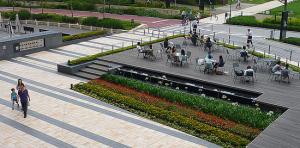
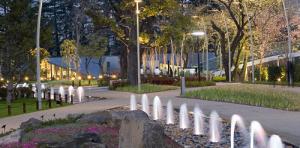
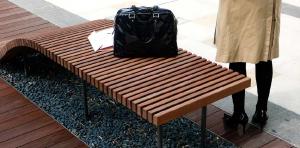
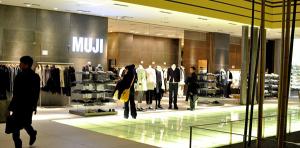
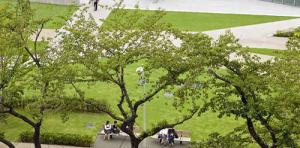
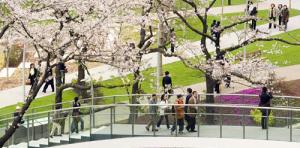
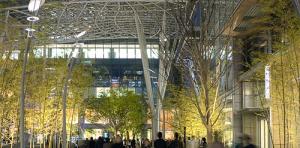
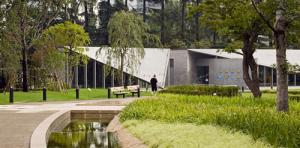
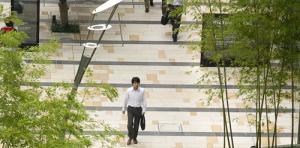
No wonder malls and transportation hubs in Asian cities seem to be much more popular than parks or squares. Fact is, in Asia, we do not particularly have a park culture, courtesy of the hot and humid climate in some regions or the inherent need for a diversity of activities to partake in…?
We prefer to pop in malls to enjoy the air conditioning. Malls or transport hubs over the years have successfully managed to replicate some of the offerings of classical public spaces: They are accessible, and provide opportunities to hang out, eat and socialize with friends, but above all, they offer a gazillion choices of activities to the user; all wrapped within the shopping experience.
These are changing trends in public spaces and changing patterns in how they are consumed and used. They are the new urban spaces. More complex and layered than classical public spaces, due to their association with the programme of a private development, they aim to create a synergy among urban functions. They generally operate as several layers of functions that are overlapped. These layers are represented both in their physical space and use. This functional diversity emerges as the true face of Asia.



COMMENTS ( 2 )
posted on 14 August at 23:11
AsianUrbanist,
Your view on utopic neo-liberal managerial Asia is missing something large, it is called society. Where is it in the mall? It is a simulacrum society, a fabricated identity of brand names and lattes. There is no conviviality, only consumer isolation. Behavior, including yours, has become so brainwashed by corporate imaging that we are led to think of the mall as public, when in fact your essay fails to address the 3 criteria that you base your argument on. Particularly the elements of public space being accessible to all regardless of age, gender, class, race, economic status, etc., in your malls we only see design elements to push out the poor and elderly, to consumerize every little crevice and minimize/privatize all space, reducing expression and use of space. Ever try to take a photo of a mall? Impossible. Look at the structural hierarchy of a mall, access points, it is car-centered, or in Asia, long corridors of neon light sound bumping youth culture. People replace societal value with consumptive value, strangers are not interacting, expression is limited, it is a wasteland of identity.
In an era when we see the Malls of America failing in the hundreds and these private spaces becoming mis-managed third spaces, which are abandoned at first signs of declining revenue. There is no responsibility to society in a mall, in a disaster scenario is the mall a public amenity to serve thousands of homeless disaster victims? No! Where do they go? To the parks or public facilities (auditoriums).
You have become a part of the neo-liberal machine of no-mind, hope you can break free. Here's something to start you off:
Votre texte...
posted on 11 August at 00:30
You are totally off base when you say that a mall is a public space. It is private, and its limitations on public and associational life are excessive. There is no freedom of speech, no freedom to, for example, picket a movie theater that just tore up your contract as a fulltime worker, no allowance of petition signing for anything, no spontaneous activity of any kind, no places to sit that you don't require you to buy something. You are missing the most important element of a good public space, which is all about what you are allowed to do in the space. Your examples of Roppongi Hills tells it all. Can you show us where people can gather, sit and chat without commercial bombardments? These malls are so similar in their franchise outlets that they are rightly called "geographies of nowhere", and the corridors are as socially vapid as a train tunnel (no offense to train tunnels intended); they are "non-places", places in which you don't know where you are or what you can do except flow and shop. Yes, they have air conditioning. And if you love to shop, they have lots of mass produced products for you (though almost nothing locally made). But don't confuse this with the idea of a public space. Btw, perhaps you do not get up early enough to see how full the parks are in Asia in the morning (or early evening). You are really wrong about there not being a park culture in Asia. The problem about parks is that there are not enough of them. Malls and supermarkets are also killing the conviviality of open markets, small locally owned shops and local businesses throughout Asia, but that is a discussion for another time.